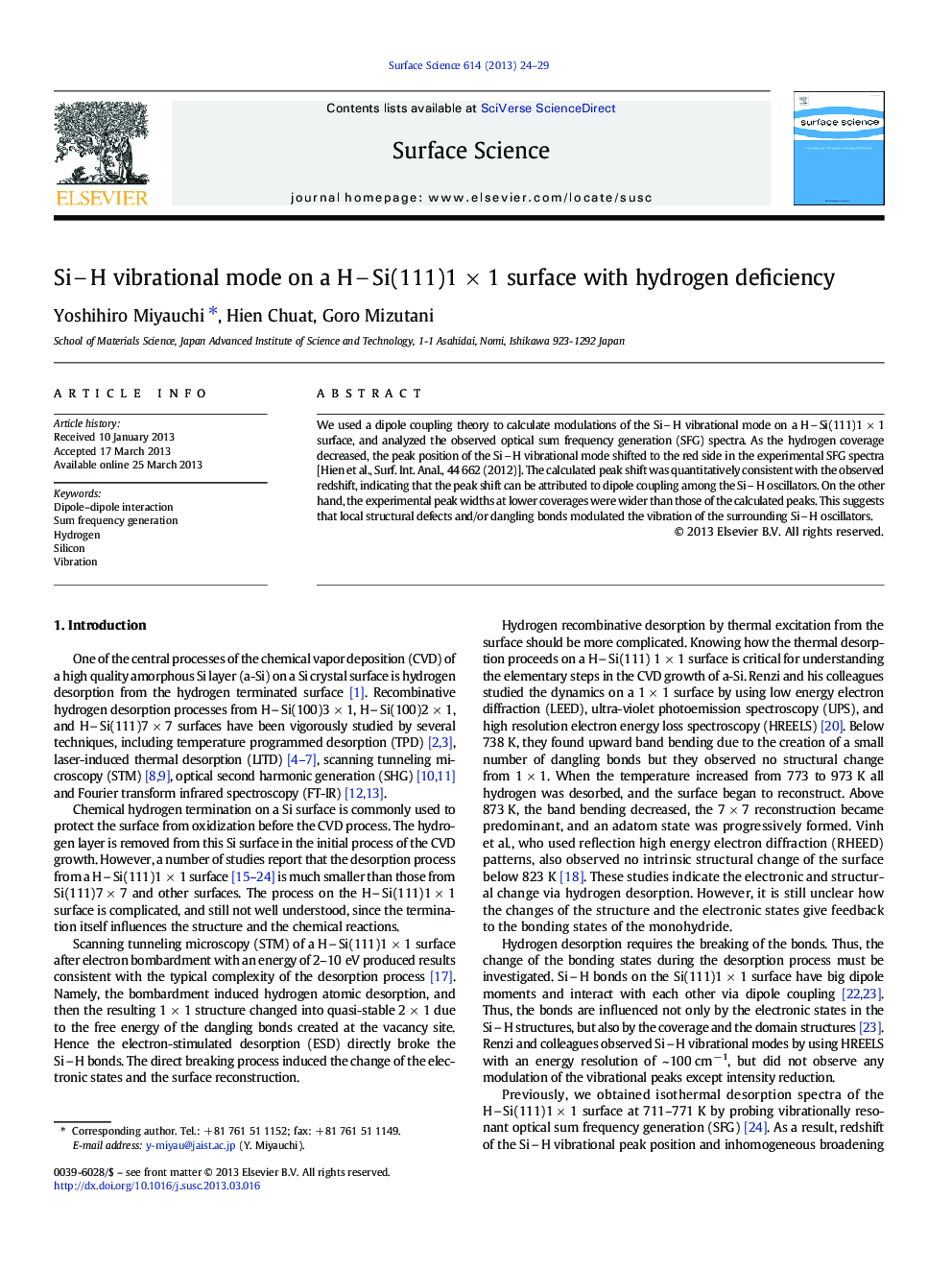| Article ID | Journal | Published Year | Pages | File Type |
|---|---|---|---|---|
| 5422347 | Surface Science | 2013 | 6 Pages |
Abstract
We used a dipole coupling theory to calculate modulations of the SiH vibrational mode on a HSi(111)1Â ÃÂ 1 surface, and analyzed the observed optical sum frequency generation (SFG) spectra. As the hydrogen coverage decreased, the peak position of the SiH vibrational mode shifted to the red side in the experimental SFG spectra [Hien et al., Surf. Int. Anal., 44 662 (2012)]. The calculated peak shift was quantitatively consistent with the observed redshift, indicating that the peak shift can be attributed to dipole coupling among the SiH oscillators. On the other hand, the experimental peak widths at lower coverages were wider than those of the calculated peaks. This suggests that local structural defects and/or dangling bonds modulated the vibration of the surrounding SiH oscillators.
Related Topics
Physical Sciences and Engineering
Chemistry
Physical and Theoretical Chemistry
Authors
Yoshihiro Miyauchi, Hien Chuat, Goro Mizutani,
